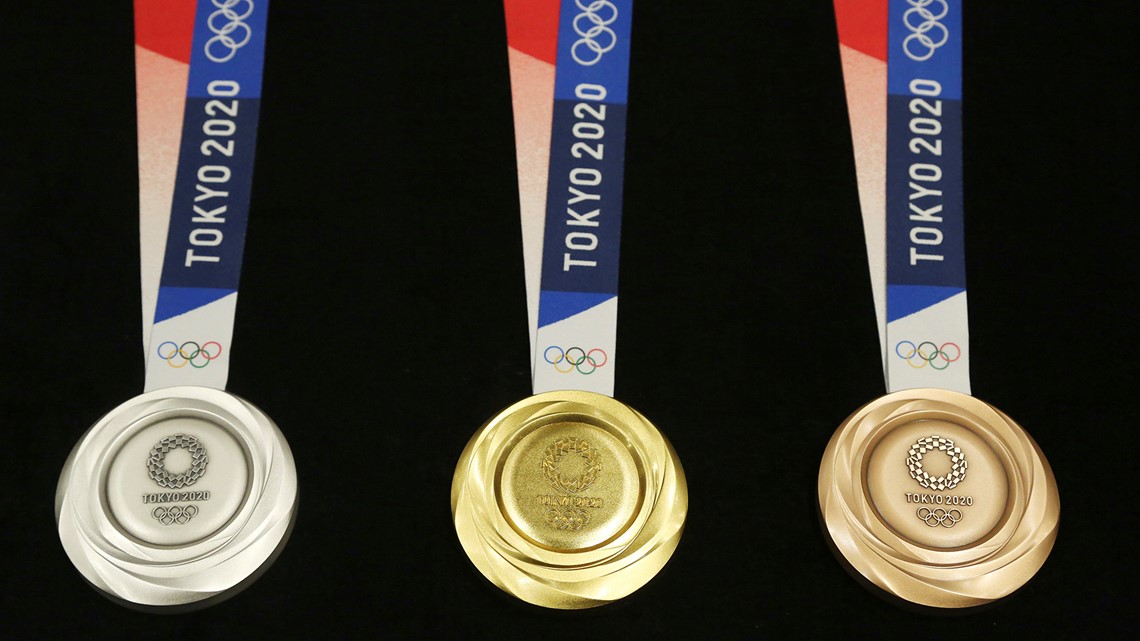Editor's note: This story was originally published on July 24, 2019.
The gold, silver and bronze medals that will be placed around the necks of athletes at the 2020 Olympics will be made completely from metals extracted from recycled cell phones and other small electronic devices.
The medals were unveiled Wednesday, marking one year to the official start of the Games.
The Tokyo Olympic and Paralympic organizing committee conducted a project to collect the devices from across Japan. The committee says this will be the first Olympics and Paralympics to involve citizen assistance and recycled materials in the making of the medals.
Approximately 78,985 tons of electronics were collected over two years as part of the Tokyo 2020 Medal Project, according to the Tokyo organizing committee. That includes 6.21-million used mobile phones. Some 5,000 medals have been produced.
Smelting contractors extracted gold, silver and bronze elements from the devices. According to standards set by the International Olympic Committee, gold and silver medals must contain a minimum of 92.5% silver. Gold medals must be plated with at least 6 grams of pure gold.
The Tokyo 2020 Medal Project has collected 7,716 pounds of silver and 70.5 pounds of gold through the recycling program, the Tokyo organizing committee said.
The look of the Olympic medal was designed by Junichi Kawanishi. As required by the IOC, the medals shows Nike, the Greek goddess of victory, in front of the Panathinaikos Stadium; the Olympic rings; and the official name of the 2020 Tokyo Games.
"The medals resemble rough stones that have been polished and which now shine, with 'light' and 'brilliance' their overall themes," Tokyo organizers said in a statement. 'The medals collect and reflect myriad patterns of light, symbolizing the energy of the athletes and those who support them; their design is intended to symbolize diversity and represent a world where people who compete in sports and work hard are honored."


The ribbons that hold the medals around the athletes' neck were made from recycled polyester fibers that produce less carbon dioxide during their manufacturing process, according to the committee.
"The best part is that each citizen has a chance to contribute to the story, to raise awareness about a sustainable future and to make a unique contribution," Ashton Eaton, the American decathlete who won gold medals in 2012 and 2016, said in a statement. "The awesomeness of this project makes me want to come out of retirement and compete for one."
The Paralympics medal design will be released at the end of August.
The Opening Ceremony is July 24, 2020, although competition will begin two days earlier.



